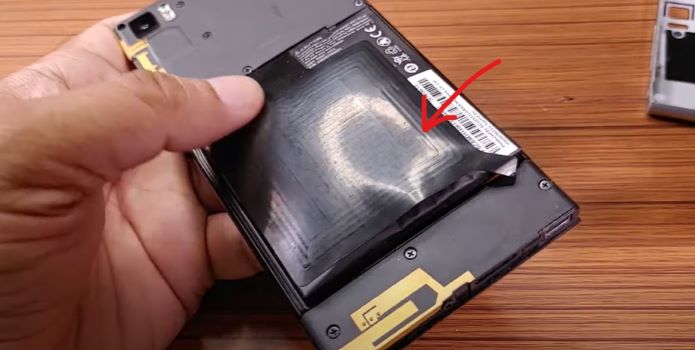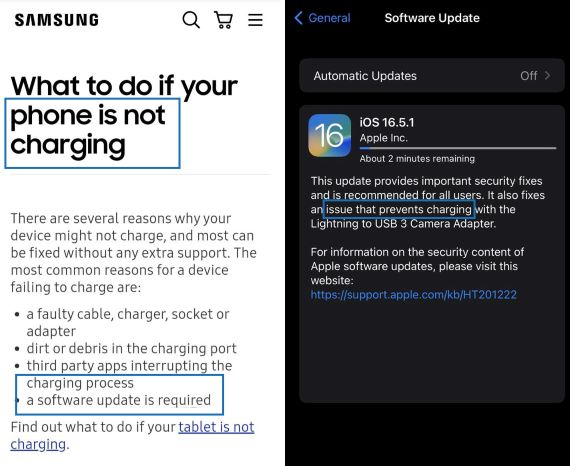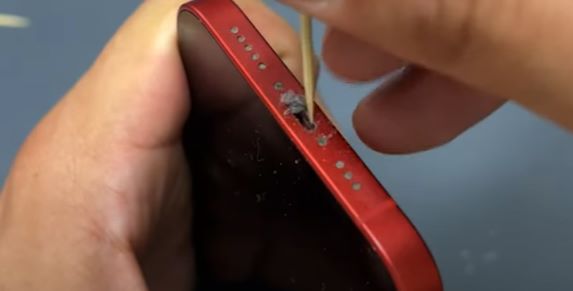Discover the reasons behind of this topic Why is My Phone Charging Backwards? and learn how to fix it. Get insights into common issues and solutions in this comprehensive guide.
In today’s fast-paced digital world, the dependence on smartphones is immense. However, encountering issues like a phone charging backwards can be perplexing and frustrating. This phenomenon, where the battery percentage decreases despite being plugged into a charger, raises concerns about the device’s functionality and battery health. Understanding why our gadgets are not performing optimally and how to resolve it is essential.
In this comprehensive guide, we delve into the intricacies of why phones may charge in reverse and provide actionable solutions to rectify this common issue. From exploring the underlying causes to offering troubleshooting tips, we aim to empower users to tackle charging problems effectively. With the latest insights and expert advice, you’ll gain valuable knowledge to troubleshoot and prevent your phone from setting backwards.
| Mostly I Use these Quick ways To Fix My Phone Charging Backwards |
|---|
| Check Charger, Charging port and Cable |
| Reboot Your Phone |
| Update Your Software |
| Manage Background Apps |
| Prevent Overheating |
Understanding the Issue: Why is My Phone Charging Backwards?
When we refer to “charging backwards” in the context of mobile phones, we’re describing a situation where the device’s battery level decreases instead of increasing. At the same time, it’s connected to a charger. This perplexing phenomenon can be frustrating and concerning for users, as it indicates a malfunction in the charging process.
Several factors, including faulty hardware components, software glitches, or incompatible accessories, can contribute to this issue. For example, a defective charger or cable may fail to deliver the necessary power to charge the device properly, leading to a decline in battery percentage despite being plugged in. Similarly, software bugs or firmware issues can disrupt the charging process, causing the battery level to decrease unexpectedly.
Moreover, environmental factors such as temperature extremes or exposure to moisture can also affect charging performance, potentially resulting in reverse charging behaviour. Additionally, background processes or apps running on the device may consume more power than the charger can provide, leading to a net loss in battery capacity over time.
Understanding the root cause of charging backwards, It is important to have this information for effective troubleshooting and resolution of the issue.”. By diagnosing the underlying problem, users can take appropriate steps to rectify the issue, whether it involves replacing hardware components, updating software, or adjusting charging practices.
Overall, “charging backwards” is a red flag indicating potential issues with the device’s charging system, prompting users to investigate and address the problem promptly to ensure optimal performance and battery health.
Common Causes of Phone Charging Backwards
- Defective Charger or Cable: A faulty or damaged cable can disrupt the charging process, leading to reverse charging behaviour .
- Software Glitches: Software bugs or firmware issues can interfere with the charging mechanism, causing the battery level to decrease instead of increase while plugged in.
- Battery Issues: A malfunctioning or degraded battery health can result in reverse charging. Over time, batteries can gradually lose their ability to hold a charge efficiently., leading to unexpected behaviour during charging.

- Environmental Factors: The charging performance of the device Exposure to extreme temperatures or moisture may impact it.., potentially causing it to charge backwards. It’s essential to keep the device and charging accessories in a suitable environment to prevent such issues.
- Background Processes: Intensive background processes or apps consuming excessive power can surpass the charger’s output, resulting in a net battery capacity loss. Closing unnecessary apps or optimizing device settings can help mitigate this issue.
Understanding these common causes can aid in troubleshooting and resolving the issue of phone charging backwards effectively. By identifying the underlying problem, Users can take necessary steps to ensure the charging function works smoothly.
Solutions to Fix Phone Charging Backwards
Check Charger and Cable:
Please ensure that both the charger and the cable are in good working condition and compatible with your device. Use only certified chargers and cables to avoid compatibility issues and potential damage to your device.
Here are some Recomended Best Mobile Chargers:
| Charger/Cable | Output (Watts) | Cable Type | Compatibility |
|---|---|---|---|
| Anker PowerPort Atom PD 2 | 60W | USB-C to USB-C | Universal |
| Nekteck USB-C to USB-C Cable | – | USB-C to USB-C | Universal |
| Apple 20W USB-C Power Adapter | 20W | USB-C to Lightning | Apple Devices |
| RAVPower 30W 2-Port Wall Charger | 30W | USB-A, USB-C | Universal |
| Aukey USB-C to USB-C Cable | – | USB-C to USB-C | Universal |
Reboot Your Phone:
A simple reboot can sometimes resolve software glitches causing the charging issue. Restart your phone to refresh its system and fix any underlying software problems.
Update Your Software:
Make sure your device’s software is current. Manufacturers frequently release software updates to resolve known issues and enhance the performance of their devices. Updating your software may fix bugs causing the reverse charging behaviour .

Manage Background Apps:
Close unnecessary background apps and processes that may drain your battery excessively. Background apps consuming power can interfere with the charging process, leading to reverse charging. Check your device’s settings to manage background activity effectively.
Prevent Overheating:
Overheating can also cause charging issues. Ensure that your device is not exposed to extreme temperatures while charging. Remove protective cases and avoid covering the device during charging to prevent overheating and potential reverse charging problems.
Implementing these solutions can help troubleshoot and fix the issue of phone charging backwards effectively. By following these steps, you can ensure that your device charges correctly and maintains optimal performance.
Tips to Prevent Charging Issues in the Future
- Use Quality Chargers and Cables: Invest in high-quality chargers and cables to ensure compatibility and reliability. Low-quality accessories may damage your device’s charging port or lead to inconsistent charging, including the issue of charging backwards.
- Avoid Overcharging: Overcharging your phone, leaving it plugged in for extended periods after reaching 100%, can degrade the battery. Unplug your device after full charge to prevent unnecessary battery stress and potential future charging problems .
- Keep Your Device Cool: Excessive heat can adversely affect battery health [how to check phone battery health] and charging performance. Avoid exposing your phone to high temperatures, such as direct sunlight or hot surfaces, while charging. Remove protective cases during charging to facilitate heat dissipation and maintain optimal charging efficiency.
- Perform Regular Maintenance: Routinely inspect your charging port for debris or damage. You can use compressed air or a soft brush to remove dirt or dust for any accumulated dirt or lint. Regular maintenance helps ensure proper contact between the charging cable and the port, minimizing the risk of charging issues.
- Update Software: Keep your device’s software updated with the latest manufacturer updates. Software updates frequently include fixes for bugs and optimizations that enhance performance, battery performance, and charging reliability.
How do I clean a charging port?
Cleaning a charging port is essential for maintaining proper charging functionality. Here’s a step-by-step guide:

- Turn off Your Phone: Before cleaning the charging port, ensure your phone is turned off to prevent any damage.
- Gather Cleaning Supplies: You’ll need a soft-bristled brush (such as a toothbrush), a can of compressed air, a wooden or plastic toothpick, and optionally, isopropyl alcohol.
- Remove Visible Debris: Use the toothpick to gently remove any visible debris or lint from the charging port. Be careful not to damage the port.
- Blow Compressed Air: Hold your phone with the charging port facing downwards and use the compressed air to blow out any remaining dust or particles.
- Brush the Port: Using the soft-bristled brush, gently sweep across the charging port to dislodge any stubborn dirt or grime.
- Inspect and Repeat: After cleaning, inspect the charging port to ensure it’s clear of debris. If necessary, repeat the cleaning process until the port is clean.
- Optional: Isopropyl Alcohol: If the port is still dirty, you can dampen a cotton swab with isopropyl alcohol and gently clean the port. Ensure the alcohol has evaporated before attempting to charge your phone again.
By following these tips, you can minimize the likelihood of encountering charging issues with your phone in the future, ensuring reliable and efficient charging whenever needed.
Final Words
In conclusion, understanding why your phone is charging backwards is essential for resolving this frustrating issue. By incorporating the latest information and expert insights, we can identify several common causes and solutions.
When your phone charges backwards, factors like the usage of the device, while plugged in, faulty chargers or cables, software glitches, or even physical damage to the charging port, could be at play. To address this, users can try various troubleshooting steps, such as cleaning the charging port, using quality chargers and cables, and ensuring the software is up to date.
Preventing charging issues in the future involves:
- Adopting proactive measures like avoiding overcharging.
- Keeping the device excellent during charging.
- Performing regular maintenance.
- Updating software regularly.
Following these practices can help maintain the health of your phone’s battery and charging system, ensuring reliable performance over time.
By following these guidelines and taking necessary precautions, users can minimize the risk of encountering charging issues and ensure a smooth charging experience with their mobile phones.
FAQs:
How do I fix reverse charging problem?
– Check for liquid or debris in the charging port and clean it .
– Reboot your phone to reset any stuck programs draining power.
– Use quality chargers and cables to ensure proper charging .
Why is my phone charging but going down?
Is backward charging harmful to my phone’s battery?
How do I turn off reverse charging?
Can a software update fix backward charging?
Is reverse charging bad for battery?
Why is My Phone Charging Backwards?
a. Usage of the device while plugged in, causing battery drain.
b. Issues with the charging cable or charger.
Software glitches or bugs.
d. Overheating of the device during charging.
Why is my phone charging slow?
Using a damaged or incompatible charging cable or adapter can significantly slow down charging speed.
2. Background Apps and Connectivity:
Background apps and connectivity features like Wi-Fi, Bluetooth, and location services can consume power, slowing down charging. Ensure to close unnecessary apps and disable non-essential connectivity options while charging.
3. Faulty Charging Port:
A damaged or dirty charging port can impede the flow of power, leading to slow charging. Clean the charging port regularly to remove any debris.
4. Battery Calibration:
Sometimes, recalibrating the battery can help improve charging speed. This involves draining the battery completely and then charging it to full capacity without interruptions.
5. Power Source Issues:
Using a faulty power source or USB cable can lead to slow charging. Ensure the power source is functioning correctly and try using a different cable or adapter if possible.
Other Blog Posts:

